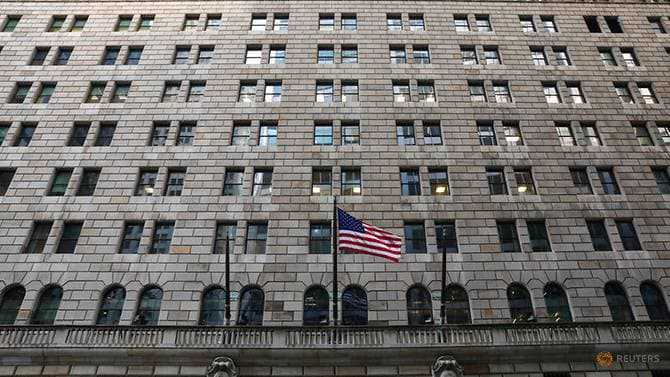Why is the New York Fed pumping billions into the money
19 September, 2019

For the first time in more than a decade, the US central bank this week stepped into financial markets to keep interest rates on short-term lending from popping above its target range.
The New York Federal Reserve Bank conducted money market interventions on Tuesday (Sep 17) and Wednesday and planned another for Thursday morning, as a cash crunch drove up the cost of borrowing for banks that need to replenish the reserves they hold at the central bank.
WHAT IS THE MONEY MARKET?
Financial institutions use money markets to borrow for very short periods, from one day to a year, a crucial function to keep the gears of the economy running.
In so-called repurchase or "repo" agreements, banks borrow by putting up assets like Treasury notes as collateral and then repay the loans with interest the following day.
This lets them replenish the cash holdings they keep at the central bank whenever the amount falls below the required minimum set by the Fed.
Money market interest rates typically track closely with the target range that the Fed sets for the federal funds rate, the benchmark lending rate that influences borrowing costs throughout the global economy.
WHY DID THE NEW YORK FED INTERVENE?
Money market rates began to jump on Monday afternoon, hitting as high as 10 per cent in some cases, surprising traders.
The reasons behind borrowers' sudden demand for cash were attributed to a host of technical conditions that converged to drain money out of the system.
There were major cash withdrawals as quarterly corporate taxes came due, at the same time as a surge of US Treasury debt came into the market to finance deficit spending by the federal government.
More generally, more government securities have built up on the balance sheets of private firms these days as the Fed has begun to wind down the massive holdings of Treasury paper it amassed during the global financial crisis - which has also sucked cash out of the market.
"It looks like a lot of cash left the system in recent days and that demand for dollars was greater than the number of dollars in circulation," said Gregori Volokhine of Meeshaert Financial Services.
To bring rates down, the New York Fed pumped fresh liquidity into the system through repo operations - US$53 billion on Tuesday, US$75 billion on Wednesday, with another $75 billion planned for Thursday morning.
SHOULD WE BE WORRIED?
Investors have wondered whether the sudden jump in rates was a purely technical glitch or a sign of a deeper problem in the financial system.
The event awakened painful memories of the 2008 financial meltdown, when credit markets seized up suddenly as banks feared that borrowers would go bust before repaying.
But after unveiling fresh cut to the benchmark lending rate on Wednesday, US Fed Chairman Jerome Powell told reporters the liquidity crunch was not a concern for the wider economy.
"While these issues are important for market functioning and market participants, they have no implications for the economy or the stance of monetary policy," he said.
Powell noted the tax payments deadline and surge in Treasury debt issues, which temporarily drained cash from the financial system.
"Our sense is that it surprised market participants a lot too," Powell said. "People were writing about this and publishing stories weeks ago. It was a stronger response than we expected."
But he said the New York Fed operations "were effective in relieving funding pressures".
TAG(s):
